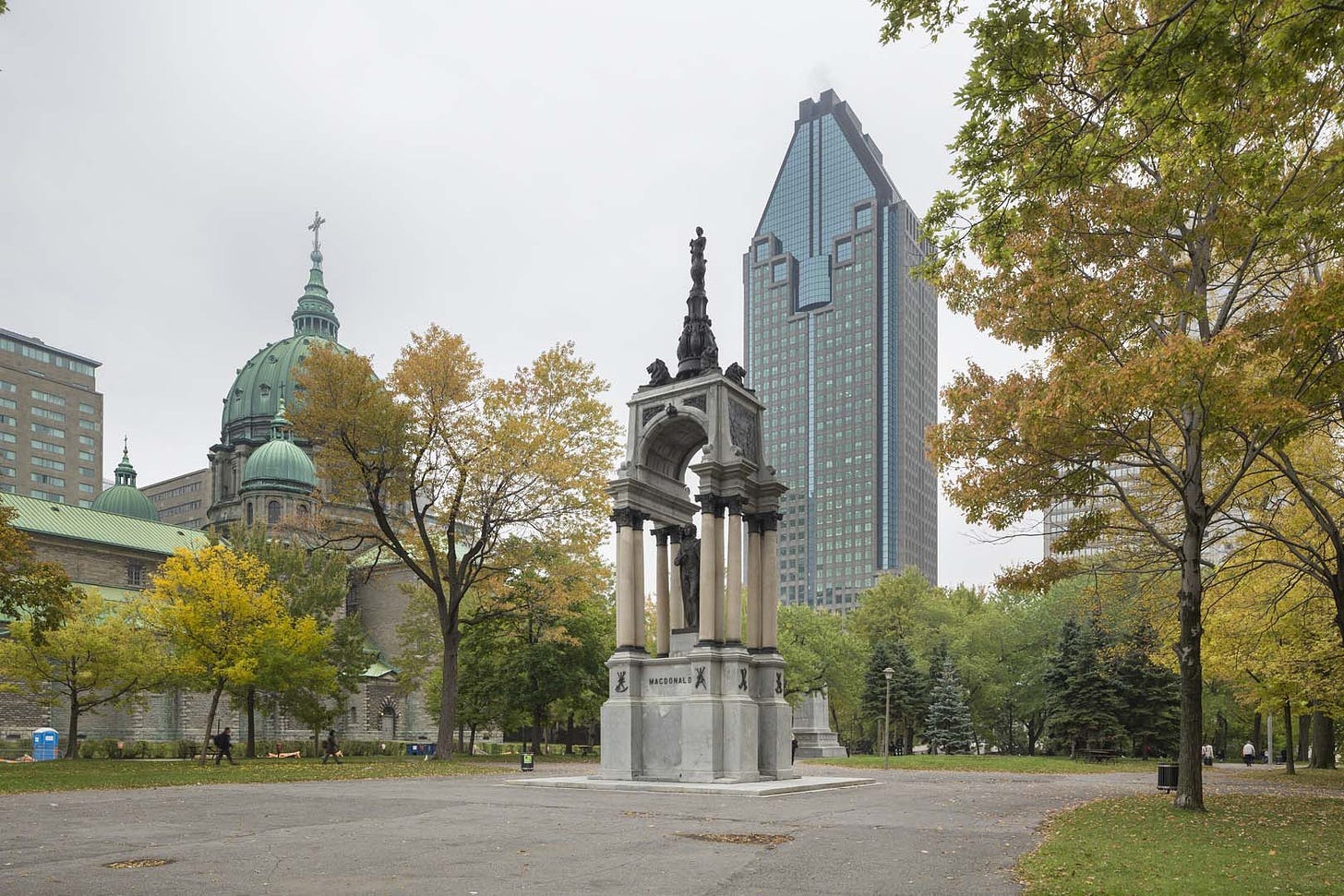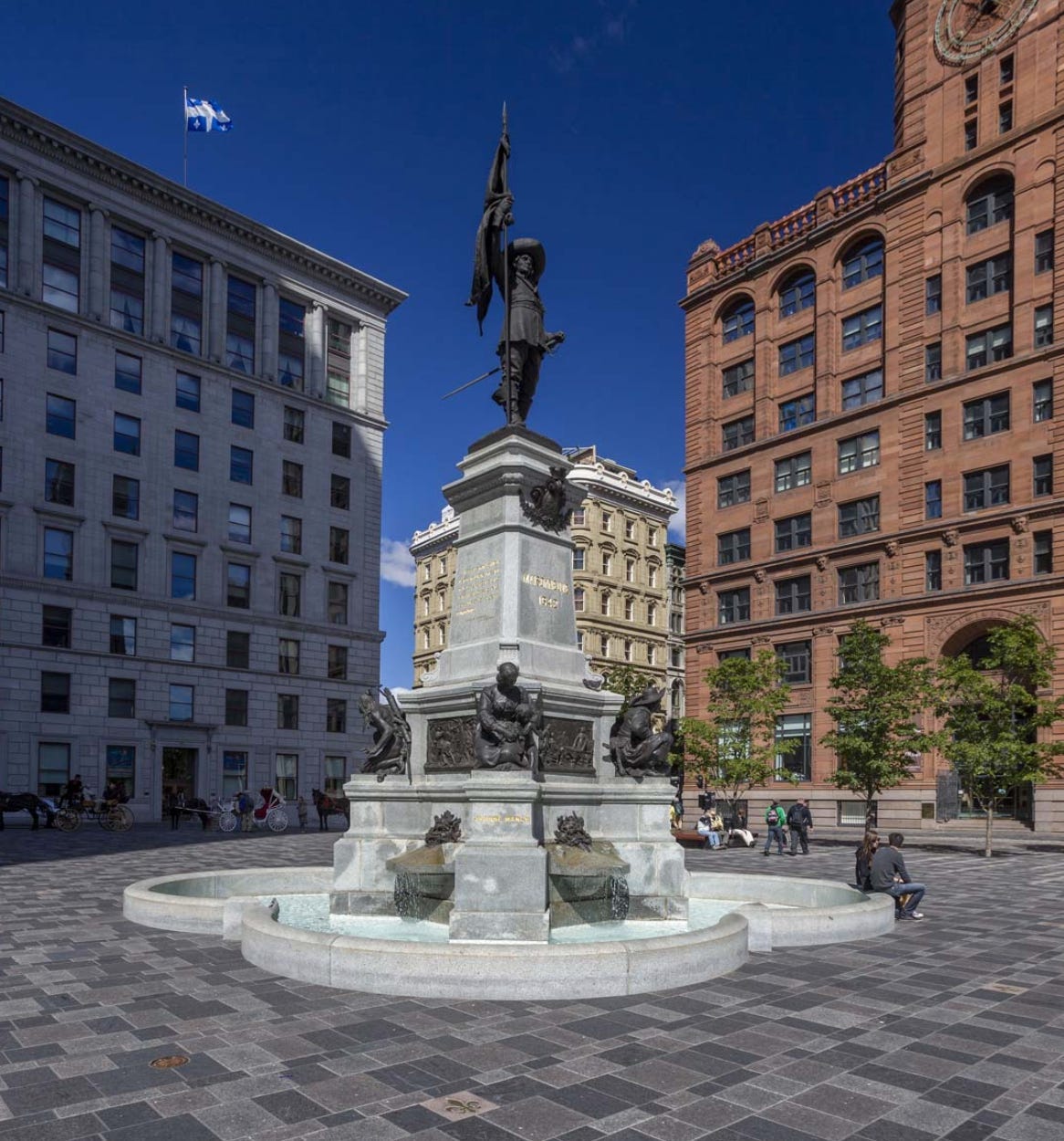Toppling the Past: Unveiling Montreal's Legacy of Settler Colonialism in Public Statues
Montreal preserves settler-colonialism through public art, and it's time for a change.

In the heart of Montreal beats the pulse of settler colonialism, an undeniable force that shapes the very essence of the city. Far from a simple chapter in our history books, it persists as a living, breathing force, infecting every aspect of our society in ways that are often overlooked and underestimated. It is not just the land we live on, but the street names that guide our daily journeys, the schools that shape future generations, and the public art, frozen in time, that stands proudly in our city. My focus today delves into the realm of public art, often manifested through monumental statues of colonial figures and events.
In a notable trend gaining momentum, people are rising up in protest, demanding for the removal or reimagination of such sneakily oppressive colonial symbols. This surge is not confined to Montreal; a particularly powerful protest in Toronto witnessed not only the removal of statues but the renaming of institutions. Such movements remind us that we must call on the players who determine the fate of historical statues to fight for justice.
Historical public statues, many of which look down on us from wretched podiums, celebrate racist leaders and events from Canada’s difficult past, thus playing an insidious role in normalizing and upholding settler colonialism in our city. While some people in Montreal may endorse these public displays, it is not individual preferences but rather our city’s government that enables the existence of these statues.
The Bureau of Public Art plays a crucial role in this regard. Responsible for managing the municipal collection of public art, the bureau acquires, preserves, and promotes over 360 works dating back to 1809. While the Bureau contributes to the vital artistic tapestry of the city, it is also responsible for maintaining historical monuments that uphold the legacy of settler-colonialism.
For example, the Bureau preserves a monument dedicated to Paul de Chomedey, sieur de Maisonneuve, who is considered the "founder" of modern-day Montreal. Maisonneuve, the first governor of Montreal in the mid-1600s, played a pivotal role in the early days of settler colonialism in present-day Canada.

The monument, created in 1895, portrays Maisonneuve standing on a column, flanked by four men at the column's base who represent the historical roots of the city. These men include three significant colonial figures and an unnamed Iroquois man. The statue also depicts Maisonneuve aiming a pistol at another Iroquois man wearing a headdress. This monument is situated in the city’s Place d’Armes Square, across from the renowned Notre-Dame Basilica of Montreal.
The statue glorifies military conquest and colonial leaders for their role in subjugating Indigenous Peoples and Lands; in the statue, Maisonneuve, holding a gun, is literally standing on top of an Indigenous man. By maintaining this celebratory monument in a public place, the Bureau of Public Art is normalizing and revering settler-colonialism.
So, where does this leave us? Montreal faces a poignant issue with statues, and it needs to be addressed. The Museum Association offers various approaches for dealing with colonial symbols, including removing names, recontextualizing displays, and outright removing statues. The question then arises: which path should we choose? Simply removing names does nothing but leave us confused and out-of-the-know, and while recontextualizing statues may provide educational value, it falls short of appropriately addressing the celebratory nature of these colonial monuments. This leaves us with one option: removal.
Ideally, the city must take accountability and abolish public colonial statues. The path to change becomes evident through the waves of statue disruptions that began in 2020. During that summer, a statue of Dollard-des-Ormeaux, a significant French-Canadian colonial figure, was vandalized by anti-colonial activists, drawing attention to the problematic nature of celebratory colonial statues. Soon after, a statue ofJohn A. Macdonald, Canada's first prime minister who played a pivotal role in enacting racist policies against Indigenous communities, was toppled and beheaded, prompting the city of Montreal not to reinstall it.

The pushback is palpable, and the city is slowly heeding the call. Nevertheless, the fight must continue. It is clear that these statues will not come down without protest, controversy, and dare I say, even acts of vandalism. As we navigate the intricate interplay between settler colonialism, public art, and the need for change, it is evident that Montreal must confront its role in preserving statues that uphold a painful history. The time has come to collectively work towards a future that acknowledges and dismantles the insidious nature of settler colonialism. We must call on our city, protest, and fight back. In the renowned words of Emma Watson: If not now, when? And if not me, who?




I think this blog post is really interesting in terms of your exploration of specific monuments, like the Maisonneuve statue, which provides good insight of the ongoing glorification of oppressive historical figures. I like how you discussed the connection between institutions like the Bureau of Public Art and McGill University in upholding these symbols of colonialism being alarming.